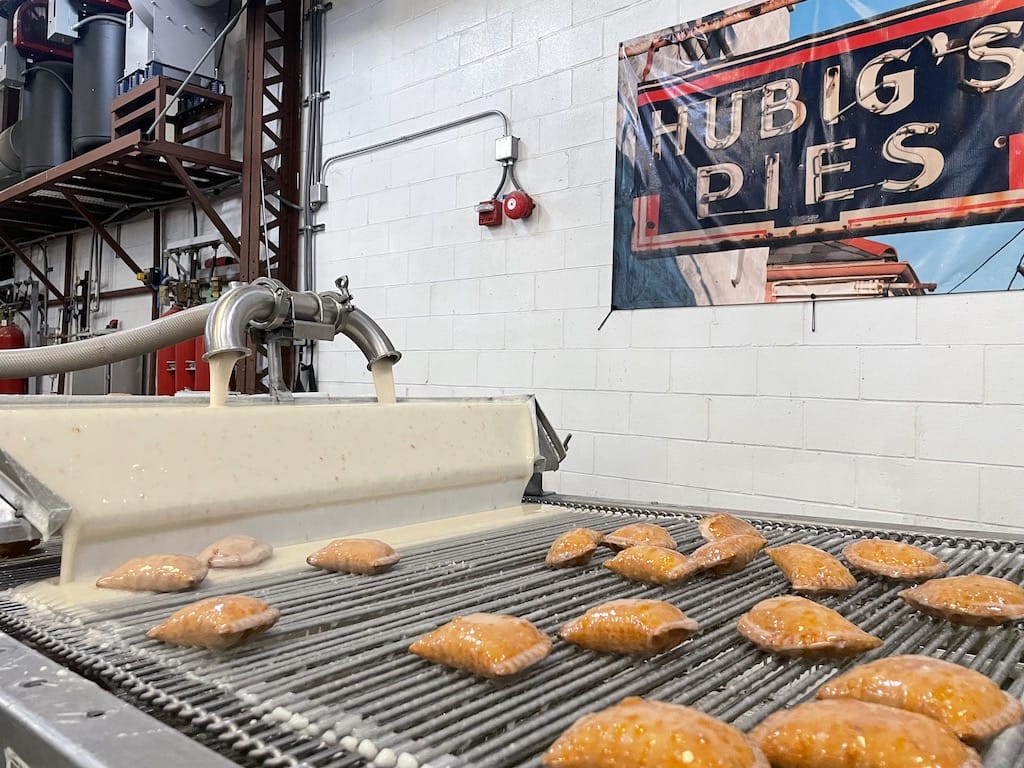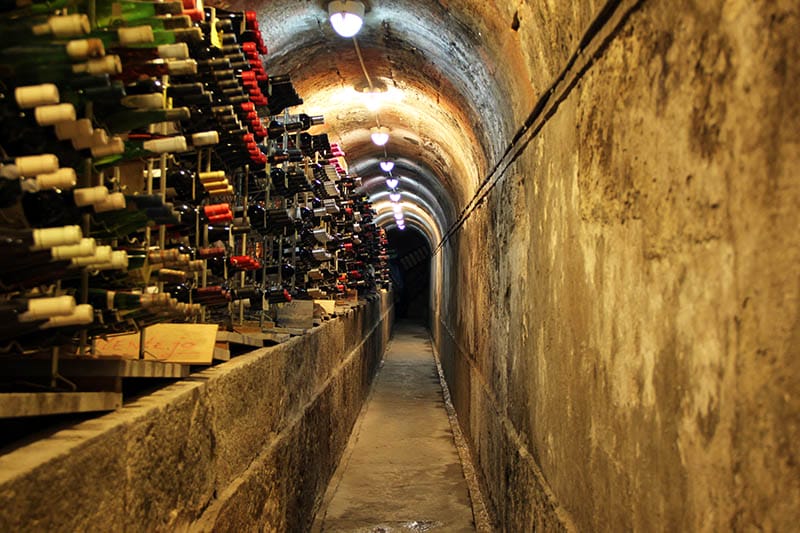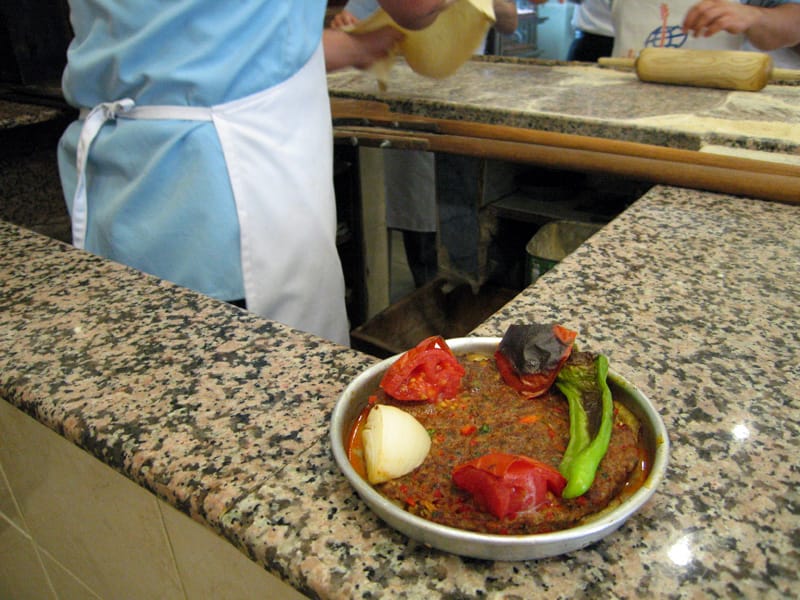“A pie might seem to be just a pie, but it’s not,” Drew Ramsey, the head of the family-run Hubig’s Pies tells us. We’re standing in the company’s new location, where conveyor belts carry a steady stream of freshly baked and glazed hand pies.
Ramsey is certainly right about his pies. Odes have been composed, bedtime stories have indoctrinated young ones, and Mardi Gras floats and costumes have been fashioned in Hubig’s Pies’ honor. In the 2010 HBO series Treme, a drama partly set in the neighborhood of the same name in the aftermath of Hurricane Katrina, the ashes of John Goodman’s character are scattered out of a pie bag as a brass band plays “Down by the Riverside.”
“They say there is no such thing as bad publicity, but I don’t know about that one,” Ramsey said. “Thanks a lot, HBO,” he joked.
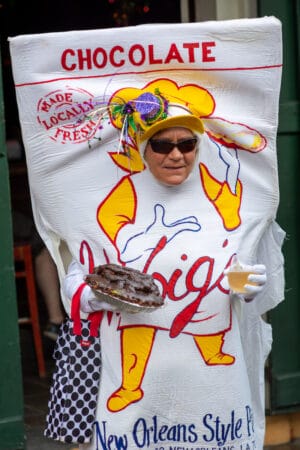
These days, there’s even more to celebrate for fans of the sweet snack. It has been a year since Hubig’s Pies returned to New Orleans after a fire destroyed the factory, shuttering the business for a decade. This might not mean much to a newcomer, but it means everything to the denizens of the Mississippi Delta. The humble hand pie had been a mainstay in the city since the 1920s.
Simon Hubig, a Basque-American entrepreneur, opened the first Hubig’s Pie storefront in Texas in 1922, and would go on to own nine bakeries throughout the South. The New Orleans location opened that same first year, the only of his bakeries that survived the Great Depression. Employees allegedly donated their food rations to keep the local branch in production, and Mr. Hubig went on to thank the city for its discerning taste, Ramsey said. In his obituary, Mr. Simon was quoted as saying he wanted to be remembered as “the Pie Man,” forever canonized as the corpulent baker “Savory Simon,” whose caricature appears atop the waxy white hand pie wrapper.
Hubig’s original recipe remains the same today: a palm-sized, turnover pie made with a hot-water dough and filled with fruit, which is sweetened with cane sugar and thickened with starch. The half-moon pie is then deep fried and coated in sugar icing. The core flavors include apple, lemon, peach, pineapple and coconut. Our personal favorite flavor, sweet potato, made from Louisiana Acadiana yams, is still not back on the shelves, as well as other several seasonal flavors that were previously offered, including blueberry, raspberry and banana.
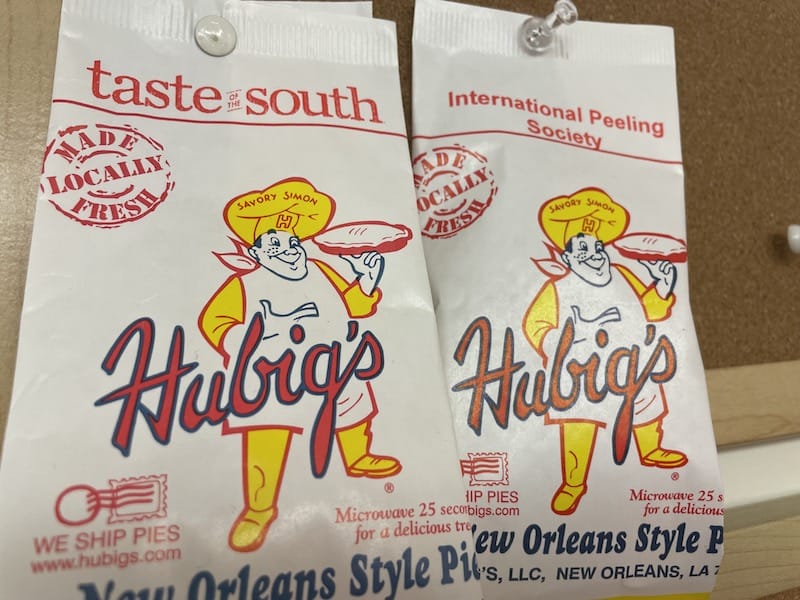
Tourists come to the Big Easy begging for beignets and Bananas Foster, paraders seek out king cakes during Carnival Time, but Hubig’s Pies are different. These four-ounce fried treats are a constant for locals – sold at supermarkets, pharmacies, convenient stores and corner shops, the portable pies are an anytime, all-the-time snack. Unlike other parts of the city’s culinary culture that have been exported and copied worldwide, the modest pie is of pure provenance, a local favorite only found within a few hours of the city limits.
“After every big, bad nasty hurricane, the first thing we often eat is a Hubig’s Pie,” Ramsey told us. The pies have always been baked fresh the day before shipment, so when Hurricane Katrina hit on Monday, August 25, 2005, the factory had tens of thousands of pies ready to hand out to first-responders and survivors holed up in the Super Dome.
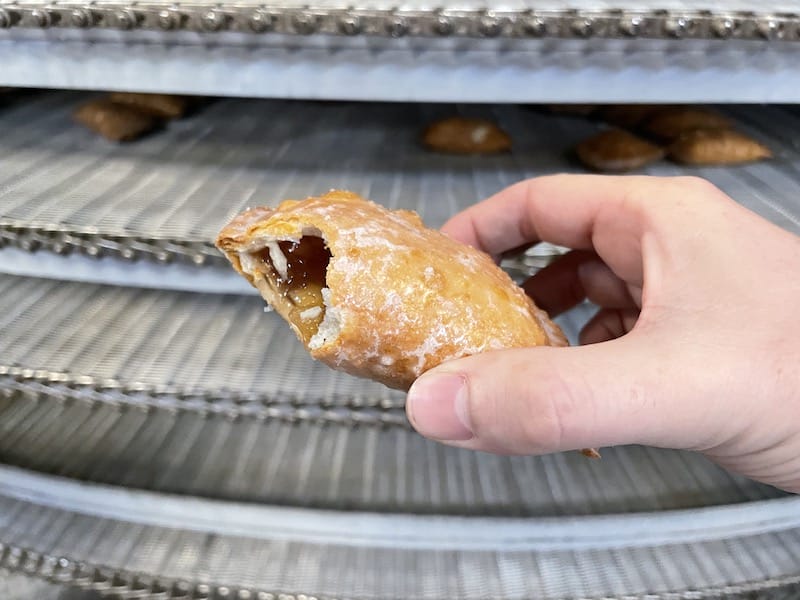
Hubig’s Pies became the motor of the city’s recovery, being delivered to parking lots where grocery stores once stood, fueling workers who gutted houses and citizens who began the city’s rebuilding.
“Some guy in a boat launch marina way down in St Bernard [Parish] wanted them,” Ramsey said after the factory restarted production in the aftermath of Hurricane Katrina. “It made no economic sense to drive an hour and a half to a boat launch, but we did. That sort of investment always pays back.”
And that foresight has always paid off, despite tragedy after tragedy. In 2012, when the city had largely gotten back on its feet after the floodwaters, a grease fire spread through the Hubig’s Pies factory on an early summer morning, destroying it in its entirety. The Ramseys vowed a comeback, but it would be years before Hubig’s was back in business – they first lost their land, followed by drama and delays, production bottlenecks and shortages, but the city cared not to forget its sweet past. After a decade of pining after them, Hubig’s Pies reappeared at a local po-boy festival back in November 2022, much to the delight of their local devotees. The staff sold out 10,000 pies in less than four hours, an apt homecoming for the humble pie.
One year in since the pies’ return, we toured the new Hubig’s factory, which has moved from its original Marigny neighborhood location to an industrial park near the Mississippi River with the imposing Huey P. Long Bridge in sight. Charlie Lemoine, the facilities supervisor, showed us around and introduced us to staff who came back to work after the decade hiatus.
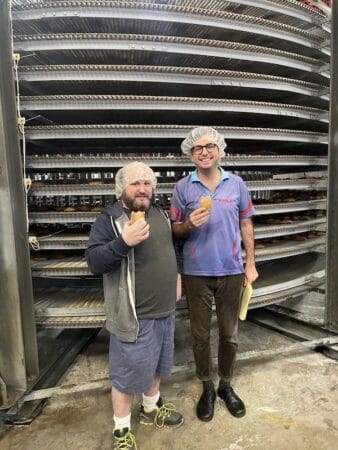
“I was a lemon two-a-day,” before he began working at the factory, he said in pure Yat, a signature dialect of the city. Now, he eats even more hand pies. “It’s for quality control,” he joked, as we bit into some freshly fried apple pies.
Charlie showed us around, explaining how the team started from scratch after the fire. They retrofitted a conveyor belt formerly used to make Hot Pockets, a brand of microwavable savory turnovers, which slots 300 pies at a time into two different immersion fryers. On the other side, golden brown pockets roll through an enrober, or “icing waterfall,” as it is referred to on the floor, which envelops the entire pie, before the pies move through a series of cooling panels. “It’s a monstah,” Charlie concluded, happy with the results of the new factory.
The primary change to the product since the fire only runs skin deep. Previously, a rubber stamp printed an off-center label on the recognizable paper Hubig’s Pie bags, but such quaint perfection is now replaced by a computerized printer that makes precise tags.
“We ask people to support what they cherish,” Ramsey said before stuffing pies into a bag for us as lagniappe, a Louisiana French Creole term for an unexpected gift. Despite setbacks, the city came out to support Hubig’s and its parochial charms. Fans can rejoice that the city once again has its little pies that taste just like when they too were little. Now, we pray and hope for the sweet potato pies to once again be back on the shelves by next season.
 March 3, 2016 Chafariz do Vinho
March 3, 2016 Chafariz do Vinho
Update: This spot is sadly no longer open.
Beneath modern Lisbon lies a complex […] Posted in Lisbon May 9, 2018 Getting “Taco Literate” In Queens
May 9, 2018 Getting “Taco Literate” In Queens
To crudely paraphrase Freud, sometimes a taco is not just a taco. That would certainly […] Posted in Queens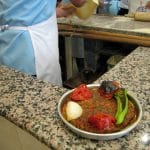 July 24, 2012 Öz Kilis
July 24, 2012 Öz Kilis
In Turkish popular lore, the residents of Kilis, a town in Southeast Turkey near the […] Posted in Istanbul
Joshua LevkowitzJoshua Levkowitz
Published on January 29, 2024
Related stories
Visit places like this on our Lisbon Culinary walks
March 3, 2016
LisbonUpdate: This spot is sadly no longer open. Beneath modern Lisbon lies a complex network of galleries belonging to the city’s 18th-century aqueduct, a monumental structure that resisted the 1755 earthquake that devastated much of the capital. The aqueduct’s 58 km of tunnels and underground channels distributed water to 33 chafarizes (fountains) – often ornamental…
Discover all the culinary delights of the Corona neighborhood on our walk!
May 9, 2018
QueensTo crudely paraphrase Freud, sometimes a taco is not just a taco. That would certainly seem to be the view held by Steven Alvarez, an Assistant Professor of English at St. Johns University in Queens, New York. First at the University of Kentucky, where he previously taught, and now at St. John’s, Alvarez has been…
July 24, 2012
IstanbulIn Turkish popular lore, the residents of Kilis, a town in Southeast Turkey near the Syrian border, are known for two things: kebab-making and smuggling. We haven’t been to Kilis, so we can’t vouch for the smuggling bit (although these days the town is featured regularly in the headlines as a hub for fighters being…







































